Man and nature are twin agents of development which shapes and reshapes the face of a community and character of man’s activities. At times the struggle between the two is violent and sporadic, which invariably activate the potential energies of man and nature, molding them into a grand pattern of advance and retreat, of creativity or disastrous anatagonism, and of promise or failure.
These are the realities that man has to face in the fulfillment of a vision and a mission for meaningful sustainable development. In 1992, there were already signs of environmental stress manifested in the City of Puerto Princesa caused by rapid increase in population and denuded watershed was not able to provide the needed water during the dry months.As dynamite and cyanide fishing have destroyed coral reefs, fisherman have had to go farther out to sea to fish.
The year 1992, saw a change of administration in the City Government with Mayor-elect EDWARD SOLON HAGEDORN taking over the 27-year administration of Mayor Feliberto Rodriguez Oliveros, Jr. Luck must have been with him when in 1992, he was elected City Mayor. He said, “it was about time that we put a stop to all these environmental exploitation. The people of Puerto Princesa City had had enough.
They wanted a leader that could put a stop to all illegal activities in the island so they urge me to run for mayor.” He declared to turn Puerto Princesa City “A Model of Sustainable Development.” To accomplish the vision, he firmed his mission to protect and rehabilitate whatever is left of the existing natural rsources; institute an intelligent, well-planned and sustainable development master plan in the utilization of its natural rsources in order to strengthen its potential of increased financial capability.
These were premised on the reality that Puerto Princesa City is endowed with untapped and underdeveloped natural resources and an estimated large population of 125,573, in 1994 spread, though in some places thinly scattered in a vast land area and necessary manpower to undertake the requirements of sustainable development. In 1990, Puerto Princesa has a labor force of 59, 899, about 31.91 percent of the employed were engaged in agriculture and fishing. Population concentration is noticeable within the eastern side of the peninsula in the 11 rural barangays of Bancao-Bancao, San Miguel, San Pedro, Tiniguiban, San Jose, San Manuel, Sta. Monica, Sicsican, Irawan, Tagburos and Sta. Lourdes which are relatively close to ech other. The rest of the barangays are scattered over the leangth of the eastern coastline of undeveloped large tract of land. There are five barangays located in the west coast, which is almost blocked off by rugged mountain and thin forest. There are two barangays which are still to be linked with the City’s road network system.
The City has a rich fishing ground. Aside from fish, shrimps, prawns, lobsters, crabs and other marine resources can be had in commercial quantities. The City has also about 1,633 hectares suitable for inland fishing. More fascinating is that Puerto Princesa is endowed with beautiful natural spots, beautiful unspoiled islands, white sand beaches and rare species of flora and fauna and cultural tribes which could boost tourism.
However, the new City administration was faced with myriad of issues and problems. Outstanding were: deteriorating peace and order and economic slump; uncooperative if not indifferent populace; lack or absence of a Master Plan of Development; there were 9,500 homeless families; inadequate banking facilities; inadequate sea and air transport; modern means of communication; dwindling tourist arrivals; lack or absence of medical services especially in far distant rural barangays; and on top of all these, the negative image of Puerto Princesa as home of prisoners, specifically the presence of Iwahig Prison and Penal Farm and the prevalence of the much dreaded water-borne malaria.
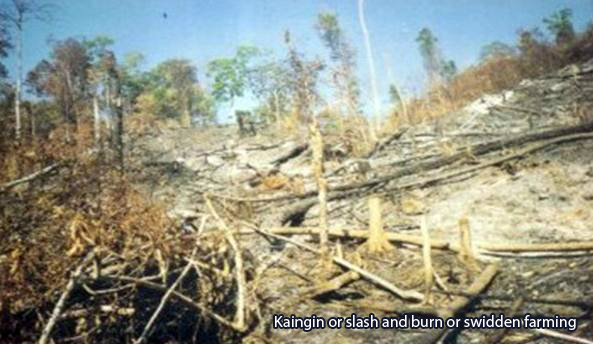
Studies unmistakably show that the immediate causes of this gloomy atmosphere were: piles of uncollected garbage and dirty streets; slash and burn farming or kaingin (Swiden farming); and the most destructive illegal logging while the depletion of marine rsources was accelerated by use of toxic substances and such fishing methods, as the muro-ami.
Edward Solon Hagedorn officially started his administration as City Mayor of Puerto Princesa, on June 30, 1992, when practically all the monies of government had already been budgeted and spent. There was 3.1Million net cash overdraft which by August, he managed to wipe out and made available another 3.1Million for his administration’s programs.
Since the turn-over happened in the middle of the year, a re-planning was done although most of the previously planned projects were vigorously pursued. Working with little funds then still available such as savings from completed projects, realignment of unspent balances of projects that were perceived to be poorly managed plus a little amount left unappropriated, the new administration resolved to demonstrate success in his development concerns.
Upon assumption of Office as City Mayor, Edward was guided by four basic principles: Positive Mind Power, Political Will, People Participation and Prayer.
Indeed, it must be Edward S. Hagedorn’s religious upbringing, in discernment internalized, the Instructions of Saint Paul to the Philippians 4:5.
It is the exercise of political prerogatives in making reasoned choice or decision or controlling one’s own action. Simply stated, it is the oft repeated saying.
The principle of Vox Populi or voice of the people cannot be taken lightly. To succeed, the people must be consulted and their wholehearted support.
This is the last but not the least of the principles. Saint Theresa of Lisieux said, “For me prayer is the surge of the heart; it is a simple look turned toward heaven;
Upon assumption of Office as City Mayor, Edward was guided by four basic principles: Positive Mind Power, Political Will, People Participation and Prayer. He attributed to these principles for success of his three-pronged program: Kalinisan, Katahimikan at Kaunlaran (Cleanliness, Peace and Order, and Development), in these words: “When Puerto Princesa clamored for change, I happened to be there. I was then made to carry the torch of new light and it was there that I realized the flames had to be continuously lit up with the Four Ps that was soon gifted us. Guided by these gifts, we were able to transcend barriers that allowed our community to rise up and shine as an example of how people can live, work and grow together harmoniously taking cognizance of the very important role our environment play in our lives.”
Indeed, it must be Edward S. Hagedorn’s religious upbringing, in discernment internalized, the Instructions of Saint Paul to the Philippians 4:5, “Show a gentle attitude toward everyone.” And “Don’t worry about anything” (6) and “In conclusion, my brothers, fill your minds with those things that are good and that deserve praise; things that are true, nonle, right, pure, lovely and honorable” (8).
It is the exercise of political prerogatives in making reasoned choice or decision or controlling one’s own action. Simply stated, it is the oft repeated saying “where there is a will there’s a way.” In other words it is spontaneous action, similar to serving God, where one must be prepared to meet trials and adversities, when done with sincerity, steadfastness, and fidelity. Misfortune and humiliation merely purify man and prove his worth.
The principle of Vox Populi or voice of the people cannot be taken lightly. To succeed, the people must be consulted and their wholehearted support and cooperation enjoined. This is the most positive way of getting things done. Philippine experiences have shown the world how “people power” toppled a strong president and a “popular” one.
This is the last but not the least of the principles. Saint Theresa of Lisieux said, “For me prayer is the surge of the heart; it is a simple look turned toward heaven; it is a cry of one’s mind and heart to God or the requesting of good things from God”. Philippians 4:6 tells us, “in all your prayers ask God for what you need, always asking him with a thankful heart.”
With unparalleled will-power and unprecedented firm determination to succeed, the City Mayor with the full support and enthusiastic cooperation of an experienced and competent staff, designed and launched three-pronged development programs namely: KALINISAN (CLEANLINESS) KATAHIMIKAN (PEACE AND ORDER) KAUNLARAN (DEVELOPMENT) or the three Ks to improve the quality of life of Puerto Princesans.
Foremost among these projects were: OPLAN LINIS; Environmental Protection (forest and marine resources); Provision of Basic Health Services; and Peace and Order.
When the projects were launched, the cynic spoke their language and called them as another ningas cogon scenario. However, Mayor Hagedorn’s strong resolve to produce results in these areas, complemented by the Sangguniang Panlungsod (which then virtually belonged to another political party) and the stunning degree of cooperation of the community, has carved out a new name for Puerto Princesa City as the “cleanest City in the Philippines.”
The process was not easy with limited resources and problems that stood on the way. But working as a team with a common goal and the will to make things happen, his administration was able to meet the challenges of development in the City of Puerto Princesa.
At the start of Mayor Edward S. Hagedorn’s administration, on August 11, 1992, the OPLAN LINIS (Operation Linis) PROGRAM and CITY ORDINANCE NO. 163-91 OTHERWISE KNOWN AS THE ANTI-LITTERING CAMPAGIN was immediately implemented. In barely two months, the City of Puerto Princesa has become clean.
Puerto Princesa before the program was like other cities of the country. Its streets were dirty, the public market stunk, the solitary pier in no better condition, and its coastal lines littered with flotsam and jetsam.
The local government seemed to have been inured by the dirt everywhere, the people resigned to the “normality” of the city’s pathetic condition. The leadership did initiate cleanliness drives, but like those of the other Local Government Units, the campaign sputtered.
City Mayor Edward S. Hagedorn in his DEDICATION written in the brochure, Oplan Linis Story, said: “A trace of our forefathers’ battle cry yet this simple line provided to be the very life that this once ignominious city held on to, to become what it is today – a Hall of Fame in the Clean and Green National Program and a multi-awarded local government unit in various fields of endeavor.”
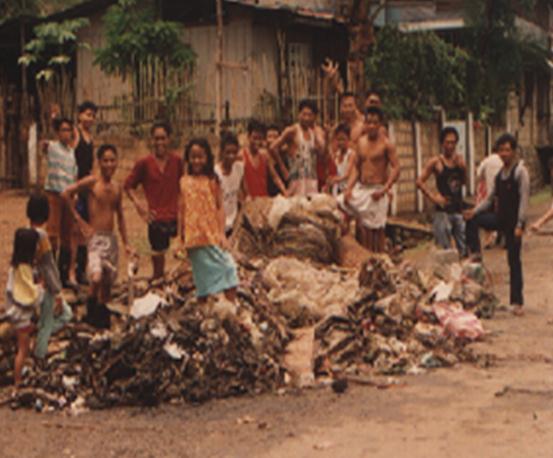
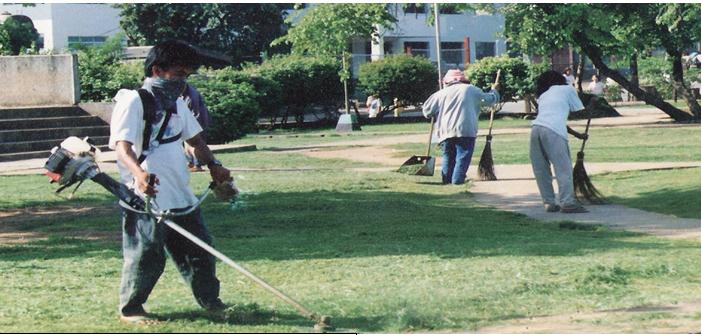
Operation Cleanliness or Oplan Linis was conceived to clean the city of tons of uncollected cigarette butts, plastics and all sorts of garbage. It was no easy task, insurmountable as it seemed, considering that the population has grown tremendously. It is his centerpiece of managing the environment.
The Oplan Linis Program is undoubtedly the best among the few that succeeded. It had brought instant honor and prestige to Puerto Princesa City, which over the years has been known as the haven of prisoners and malaria-causing mosquitoes. Through the Program, the city’s ignominious past has been radically transformed to what is known today – the country’s Model of Cleanliness.
Oplan Linis aimed to clean up not only the body of Puerto Princesa City but also the soul as well, the latter being its people. Central to this concept is value formation through massive information and education campaigns to instill in the mind and heart of the people, especially the children the importance of a clean and green environment. By environment, it meant not only the physical but the spiritual, moral and psychological aspects as well.
To comprehensively address the physical cleanliness of the city, Oplan Linis has six major components: Cleanliness, Beautification, Sanitation, Sagip-Dagat. Sagip-Hangin and Information Education Campaign (IEC). The Oplan Linis was designed to promote and implement in all the public places by no “fear or favor” City Ordinance No. 163-91 otherwise known as the ANTI-LITTERING ORDINANCE. Its major components are:
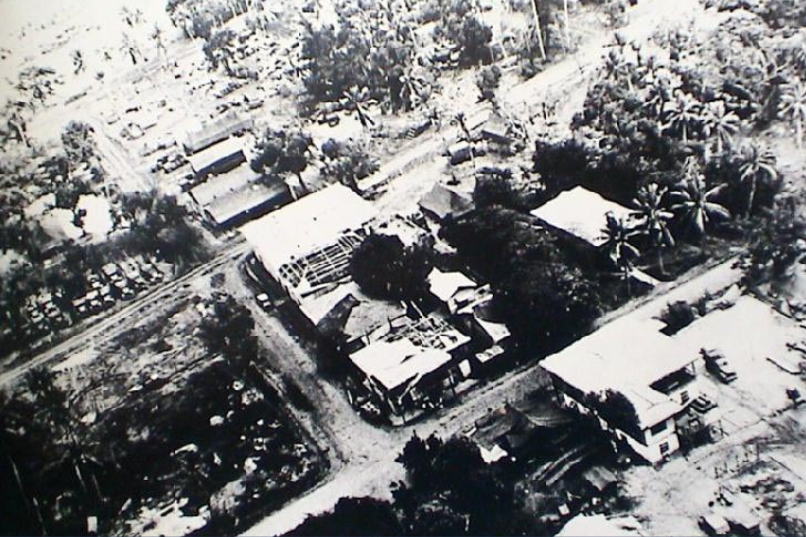
This primarily involves proper garbage and waste disposal and the maintenance of clean surroundings by street sweeping, grass cutting and unclogging of canals.

The program encourages the planting of ornamental plants in open spaces - along the streets, parks, airport, cemeteries, and private owners of lots and residential areas.
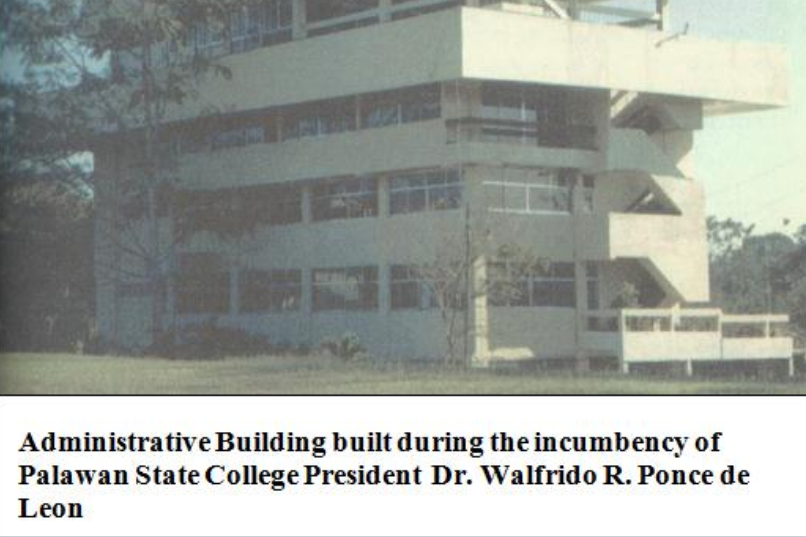
Part of the Environmental Health Service, its particular concern are examination of water facilities through the PHC Media Test, inspection of – toilets.
This primarily involves proper garbage and waste disposal and the maintenance of clean surroundings by street sweeping, grass cutting and unclogging of canals.
The program encourages the planting of ornamental plants in open spaces - along the streets, parks, airport, cemeteries, and private owners of lots and residential areas.
Part of the Environmental Health Service, its particular concern are examination of water facilities through the PHC Media Test, inspection of – toilets, food service, to include food handlers, drinking establishments, stores, markets, abattoir, recreational places and lodging houses.

The program’s objective is to institute a waste management and collection of garbage in coastal areas along Puerto Princesa Bay and Sabang Bay.

The avowed goal of the Sagip Hangin Operation is to continuously provide the people of Puerto Princesa a clean air and healthy environment.

These are done through lectures, talks, posters, radio broadcast, television programs, newspapers, interviews and testimony.
The program’s objective is to institute a waste management and collection of garbage in coastal areas along Puerto Princesa Bay and Sabang Bay in cooperation with other members of the Environmental and Natural Resources Sector and the coastal barangays. The Program included such activities as inspection of marine sanctuaries and fishing grounds and illegal fishing activities.
The avowed goal of the Sagip Hangin Operation is to continuously provide the people of Puerto Princesa a clean air and healthy environment. Executive Order No. 017, Amending Executive Order No. 07, re-activated the Task Force “Sagip Hangin” to effectively implement the Clean Air Act of 1999, issued on January 18, 2003 provided that it shall be composed of the City Environment and Natural Resources Office (ENRO) as the lead implementing agency with the cooperation and assistance of the Land Transportation Office (LTO), The City Information Office (CIO), the City’s Traffic Management Office (CTMO), the Local Philippine National Police (PNP), the Highway Patrol Group (HPG), and the Department of Environment and Natural Resources (DENR) thru the CENRO and PENRO devices of his/her own choice which meet the specification set forth by the City ENRO and/or DENR and DOTC, as provided for in RA No. 8749.
These are done through lectures, talks, posters, radio broadcast, television programs, newspapers, interviews and testimony.
Inspired by a six-year old girl, who Ellen with her mother Aliva Clark Marcelo and sister Teresita Marcelo Maslog watched while sitting in one of the benches in Rizal Boulevard, Dumaguete City, as to what would she do with an empy corn-cob, when she had finished eating her corn–on-the-cob. They made guesses: that the little girl would threw it out in the sea or better still threw it on the street but to their amazement the little girl walked a short distance toward the trash bin and threw the empty corn cob into the bin. Ellen thought that if this can be done in Dumaguete City, then, why not in Puerto Princesa City.
Silently, Ma. Elena Marcelo Hagedorn, her sisters Teresita and Editha with a team of equally motivated ladies, launched the Oplan Linis Program without fanfare. At first they tried with a group of adults with the mindset to undertake the ground work. She later found out that the adults were busy with other things for a living. So the group focused to train the youngsters. They invaded the classrooms in the elementary and high schools, with permission from the school authorities. To their satisfaction, the program was well-received. Talks on cleanliness preceded sumptuous merienda or snacks. By force of habit, a number of pupils and students aimlessly threw the food wrappers away. Others looked for the waste bin in the room. To further observe the pupils/students, the group would return to the same school going through the same process until such time the pupils and students learned and developed a mindset of cleanliness and threw the wrappers in the waste bin provided for the purpose.
Inspired by a six-year old girl, who Ellen with her mother Aliva Clark Marcelo and sister Teresita Marcelo Maslog watched while sitting in one of the benches in Rizal Boulevard, Dumaguete City, as to what would she do with an empy corn-cob, when she had finished eating her corn–on-the-cob. They made guesses: that the little girl would threw it out in the sea or better still threw it on the street but to their amazement the little girl walked a short distance toward the trash bin and threw the empty corn cob into the bin. Ellen thought that if this can be done in Dumaguete City, then, why not in Puerto Princesa City.
Silently, Ma. Elena Marcelo Hagedorn, her sisters Teresita and Editha with a team of equally motivated ladies, launched the Oplan Linis Program without fanfare. At first they tried with a group of adults with the mindset to undertake the ground work. She later found out that the adults were busy with other things for a living. So the group focused to train the youngsters. They invaded the classrooms in the elementary and high schools, with permission from the school authorities. To their satisfaction, the program was well-received. Talks on cleanliness preceded sumptuous merienda or snacks. By force of habit, a number of pupils and students aimlessly threw the food wrappers away. Others looked for the waste bin in the room. To further observe the pupils/students, the group would return to the same school going through the same process until such time the pupils and students learned and developed a mindset of cleanliness and threw the wrappers in the waste bin provided for the purpose.
Through this painstaking process of educational campaign, Oplan Linis, became a way of life as more and more young people enlisted to be members of the Oplan Linis Family. As such they become the promoters and enforcers of cleanliness in their community – their homes, in public places, including public utility vehicles plying the Puerto Princesa City and far flung areas in the Province of Palawan.
Enforcement. The enforcement of the Anti-Littering Ordinance was effected and after a few apprehensions, readily accepted by the community. Its strict enforcement proceeded without let-up and applied to all regardless of social standing, even high officials of government are not spared the payment of fines for violations.
The Mayor Fined For Littering. Ellen related an incident where husband Mayor himself was a violator of sorts. She recalled with a grin how they were able to impose a fine on the Mayor. Accordingly, on the year Oplan Linis was launched, Mayor Hagedorn called for a meeting. A habitual smoker, nonchalantly threw his cigarette butt in theyard.
The City Chief of Police reported to Mrs. Hagedorn: “Ma’am si sir o nagtapon ng upos” (Ma’am, look, sir threw his cigarette butt in the yard). She told the Chief of Police “Multahan mo siya. Kung hindi mo siya multahan, ikaw ang multahan ko” (“Fine him, if you don’t fine him, I’ll fine you.”). Mayor Hagedorn overhearing her directive asked “Pati ba ako sama diyan?”(“Am I also included in the paying of fine?”). “Aba natural” (Of course), she answered. The Chief Executive paid the fine of Php 200.00. Broadcast media had Mayor Hagedorn on radio and television for sometime. The local newspapers also reported that the Mayor was caught throwing his cigarette butt in the yard and paid the fine for violating the Anti -Littering Ordinance. Visitors who come to Puerto Princesa City are continually cautioned by air and sea transport authorities to observe the City’s Anti-Littering Ordinance or be fined for y violation.
Eleazar M. Famoran, (Health & Home, November- December 2000: 27-29) wrote that what she found out about the residents of Puerto Princesa was that they mind getting their pockets punctured less than they mind getting their pride pricked. Pride is a clean community. Pride as a people who take cleanliness seriously, who make cleanliness a way of life.
The Oplan Linis workforce of about 70 employees, sweep the streets, landscape and clean public places, parks, public restrooms, hauled 30 tons of rubbish per month from the coastline of Puerto Princesa Bay, impounded stray dogs found in the city’s main thoroughfares and side streets, oriented all elementary school pupils in the urban barangays on the program and enlisted them to become members of the OPLAN LINIS FAMILY.
It was estimated that more or less 8.5 tons of garbage per day or an estimated 30,600 tons during the year in 15 barangays were hauled daily in 2003. The dumpsite is sprayed with micro-aid activator to mitigate odor and get rid of flies to ensure that the health of the people living in the vicinity of the dumping areas are not affected. The sanitary and healthful environment has co nsiderably lessened the incidence of an epidemic as compared to previous years whereby at least 100 families were infected by contagious diseases and viral infections due to its unsanitary surroundingsThe strict enforcement of the Anti-Littering Ordinance dramatically changed the negative attitude to more positive ways, such that, the public carriers had devised a system where garbage receptacles are strategically installed inside the vehicle. Even the balot and other ambulant vendors carried with them receptacles for clients to put food refuse and the like.
The Oplan Linis Program gained perceptible acceptance with increase in the number of Oplan Linis Families, an organization composed mostly of elementary school pupils and high school students, who have been truly motivated to make cleanliness and sanitation a way of life. Only one family is organized in every school with not more than 50 members.
Succinctly, the impact of Oplan Linis Program’s non-quantifiable indicators is expressed in the brochure as:
We really cannot place a tag for the acquired self-esteem, encouraged by the success of the program, the individuals who once were skeptical to overnment nitiated activities are now properly motivated with the right attitude and proper values.Disciplined as they are now, the people continuously play a major role to support the gains acquired thru the programs. We can only listen to their anecdotes of things they have done here and wherever they maybe that they are Puerto Princesans – proud of having imbibed the virtue of cleanliness. The Oplan Linis Project Manager, City First Lady Ma. Elena Marcelo Hagedorn says of the future of the program:
High expectations based on the program’s success are not remote. At our end we want the program to be sustainable, to go beyond the term of the present Administration. We will be proud to see the same things happening in most parts of the country as well.
Basically, the program envisions a zero waste community. Garbage receptacles will no longer be installed in major thoroughfares. Trash coming from the households must be properly disposed based on its classification as to wet which is mostly biodegradable, non-biodegradable and a separate container for the bottles. This in effect, will minimize those that need to be collected and dumped at the site. The present rate of garbage disposed of have been reduced from an average of 8,5 tons per day two years ago to the present average of three tons per day. The bulk of the garbage comes from the marketplace. Except in this area, we are targeting once a week garbage collection in Puerto Princesa’s households.
Technology transfer in recycling will also be conducted as an alternative livelihood activity. Garbage classified to be of value will be utilized for this purpose. The program is now improving on the quality of organic fertilizers produced. Once developed, it will answer the fertilizer requirement of the City Government’s agricultural program. As future production warrants the same will be made available to the private sector.
We aspire for a higher degree of discipline, based on the people’s developed sense of pride and commitment. Only through this, can we really look back and say “we made a significant mark in the establishment of a model community. (Brochure: Oplan Linis Story. The Puerto Princesa Experience.)
In 1894, Puerto Princesa said to be the smallest among the Hispanic settlements in the island of Paragua, became known as “Unos de los mas bellas,” an award of recognition as one of the most beautiful towns in the Philippines for its orderly distribution of streets and houses and its cleanliness. A century later, regained its title, when in a joint search launched through the Department of Interior and Local Government (DILG); Department of Environment and Natural Resources (DENR); Department of Tourism (DOT) and Civic Groups by First Lady Amelita Ramos, has chosen Puerto Princesa City as the “CLEANEST AND GREENEST COMPONENT CITY IN 1994.”
Then in 1995 it continued to hold the distinction as the Cleanest and Greenest City in the Country when it won the AWARD OF EXCELLENCE given by His Excellency President Fidel V. Ramos at Rizal Park, Manila on December 19, 1995. Likewise, theCity was adjudged as the Cleanest and Greenest in Region IV and CLEANEST INLAND BODY OF WATER.
The City’s sustained drive to maintain cleanliness, beautification and environmental sanitation thru its OPLAN LINIS Program, has for three consecutive years held the distinction as the CLEANEST AND GREENEST CITY in the Country, earned the 1996 HALL OF FAME AWARD.
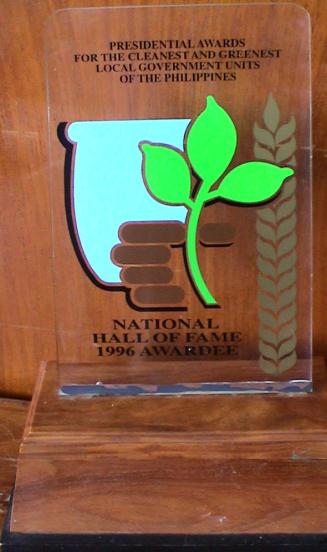
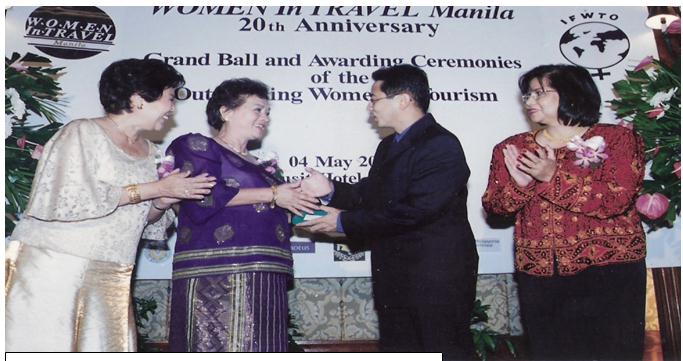
The role of women in the development of Puerto Princesa City is best attested by the awards given particularly to Mrs. Ma. Elena Marcelo Hagedorn, one is for Oustanding Woman in Tourism in 2000 by the organization of Women in Travel (WIT), Manila. The award was given in recognition of the “achievements of prominent women in government who have dedicated themselves to the growth of tourism in their own areas”, making their respective cities well known the world over. Mrs. Hagedorn was awarded Outstanding Woman in Tourism for her contributions as key partner in the several eco-tourism awards such as the Philippine Earth Award for Wildlife Protected Area Management; the Grand Award in the First Macli-ing Dulag Environmental Achievement Award, and other clean and green awards for the City and in the re gioHer other achievements in the promotion of tourism are: the Palawan visitors exhibit of local tourist attractions was chosen for five consecutive years the Travel Mart’s Best Tourism Destination Booth; in 1994 Travel Mart chose Puerto Princesa –Palawan as the country’s best tourism destination and received a citation from SKAL for espousing cleanliness, peace and order, and economic progress which continued to attract foreign and local visitors. Moreover, the visitors enjoyed such eco-tourism activities as caving, scuba diving, jungle trekking and the like. The National Council of Women of the Philippines, has chosen Mrs. Ma. Elena Marcelo Hagedorn as the Ten Outstanding Women of the Philippines on April 3, 2003 for her outstanding performance as Oplan Linis Program Manager of the City of Puerto Princesa

This primarily involves proper garbage and waste disposal and the maintenance of clean surroundings by street sweeping, grass cutting and unclogging of canals.

The program encourages the planting of ornamental plants in open spaces - along the streets, parks, airport, cemeteries, and private owners of lots and residential areas.

Part of the Environmental Health Service, its particular concern are examination of water facilities through the PHC Media Test, inspection of – toilets.
This primarily involves proper garbage and waste disposal and the maintenance of clean surroundings by street sweeping, grass cutting and unclogging of canals.
The program encourages the planting of ornamental plants in open spaces - along the streets, parks, airport, cemeteries, and private owners of lots and residential areas.
Part of the Environmental Health Service, its particular concern are examination of water facilities through the PHC Media Test, inspection of – toilets, food service, to include food handlers, drinking establishments, stores, markets, abattoir, recreational places and lodging houses.

The program’s objective is to institute a waste management and collection of garbage in coastal areas along Puerto Princesa Bay and Sabang Bay.

The avowed goal of the Sagip Hangin Operation is to continuously provide the people of Puerto Princesa a clean air and healthy environment.

These are done through lectures, talks, posters, radio broadcast, television programs, newspapers, interviews and testimony.
The program’s objective is to institute a waste management and collection of garbage in coastal areas along Puerto Princesa Bay and Sabang Bay in cooperation with other members of the Environmental and Natural Resources Sector and the coastal barangays. The Program included such activities as inspection of marine sanctuaries and fishing grounds and illegal fishing activities.
The avowed goal of the Sagip Hangin Operation is to continuously provide the people of Puerto Princesa a clean air and healthy environment. Executive Order No. 017, Amending Executive Order No. 07, re-activated the Task Force “Sagip Hangin” to effectively implement the Clean Air Act of 1999, issued on January 18, 2003 provided that it shall be composed of the City Environment and Natural Resources Office (ENRO) as the lead implementing agency with the cooperation and assistance of the Land Transportation Office (LTO), The City Information Office (CIO), the City’s Traffic Management Office (CTMO), the Local Philippine National Police (PNP), the Highway Patrol Group (HPG), and the Department of Environment and Natural Resources (DENR) thru the CENRO and PENRO devices of his/her own choice which meet the specification set forth by the City ENRO and/or DENR and DOTC, as provided for in RA No. 8749.
These are done through lectures, talks, posters, radio broadcast, television programs, newspapers, interviews and testimony.
